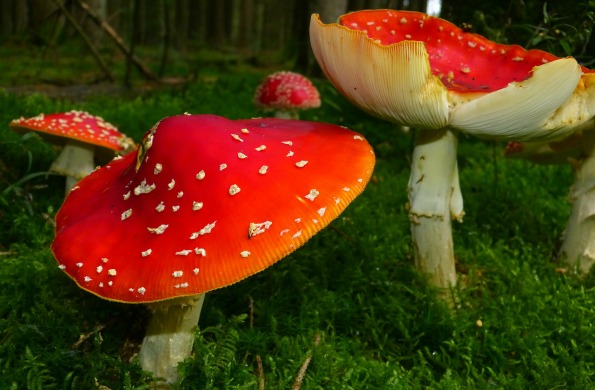Have you ever thought about how many invisible toxins you’re exposed to everyday? Unless you make your own everything, from completely natural organic materials, the odds are that you are exposed to many chemicals and other toxins every day of your life.
Let’s start with your home. According to the EPA the air quality indoors is often two to five times worse than outdoor air. This is due in part to the many chemicals that we have in our modern homes. If you have carpeting, or furniture that is covered in fabric it has more than likely been treated with chemicals to make them flame retardant and resistant to stains.

There are chemicals all around us.
Shower curtains, plywood, particle board, cabinets, computers, and a variety of cleaning products to name just a few, let off poisonous gases that we come in contact with daily. Appliances that use fuel, such as gas stoves and kerosene heaters also produce significant amounts of these toxin as well.
Some of the worst offenders of these indoor pollutants are: Formaldehyde, Trichloroethylene, Benzene, and Carbon Monoxide.
It is virtually impossible to rid our homes of all of these substances, but there are things that can be done to minimize our exposure.
Whenever possible purchase cleaners that do not use these chemicals, or make your own from natural ingredients. Vinegar and baking soda are great natural cleaners. For a chemical free toilet bowl cleaner pour 1 Cup Baking Soda into the toilet bowl followed by 2 cups of white vinegar. After the fizzing stops scrub the bowl.
For the porcelain surfaces of your tub and sink use a mixture of 1 Cup Baking Soda and ½ Cup Castile Soap. Mix them together in a bowl to make a paste. Add a few drops of essential oil and scrub those surfaces clean! This cleaner can be used on many household surfaces through each room of your home including kitchen sinks, window frames and more.
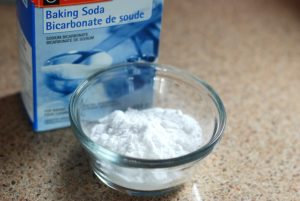
Baking Soda is a great, non-toxic cleanser.
Windows, mirrors, door handles and metal surfaces can be cleaned using a half and half mix of water and white vinegar that will leave them clean and virtually streak free.
Open the windows of your home whenever the weather allows, for air flow throughout the house, and use a diffuser with your favorite essential oil to give your home a fresh cleaned smell when you need a boost but don’t want to fill the air with chemical air fresheners.
House plants are also useful as some plants can actually remove dangerous toxins from the air while providing an increase in oxygen levels in the home. This is important to consider now that we are heading into the cold weather months when it won’t always be possible to let the fresh air in.
Some of the best plants for this purpose are: Palms, Boston Ferns, English Ivy, Spider Plants, Dracaenas, Daisies and Mums.
I love having plants around me, and all of these plants, and others, may be good choices for an office situation, but when choosing plants for your home it is important to consider who will be in the area because not all plants are safe to have around inquisitive children and pets.
A few examples of toxic plants are:
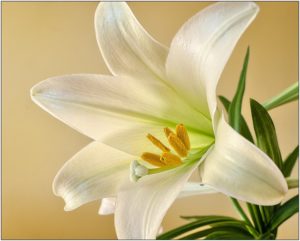
Easter Lillies are beautiful, but toxic if eaten.
(Lilium longiflorum): Cats have been known to suffer serious damage after eating Easter lilies. Eating small amounts of any part of the plant can lead to a cat’s death from kidney failure if not treated by a veterinarian within 18 hours. The plant is not poisonous to children, but they can choke on pieces of it.
(Dieffenbachia): This popular houseplant, also known as dumb cane, grows particularly well in low-light conditions so it is popular as an indoor plant. The sap of this plant however causes the tongue to burn and swell enough to block off air to the throat. It can be fatal to both humans and pets if ingested in large amounts.
(Hedera helix): Large quantities of ivy must be eaten to cause serious problems, but all parts of English ivy can cause symptoms that include skin irritation, and a burning throat after eating the berries. It can also cause a fever, and rash.
(Nerium oleander): All parts of Oleander, a popular indoor flowering shrub, are poisonous. Wear gloves and wash your hands when pruning and taking cuttings to be sure you don’t accidentally ingest the sap. It can be fatal if eaten.
(Philodendron): This is an extremely popular house plant, but they are poisonous to humans and pets. Eating them can cause burning and swelling of lips, tongue, and throat; it can also cause vomiting; and diarrhea.
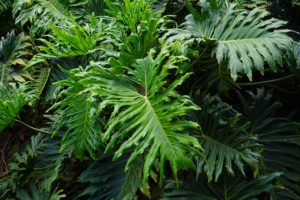
Philodendron leaves are also toxic.
(Epipremnum aureum): A close relative of philodendron, Pothos unfortunately causes the same symptoms as philodendron if ingested.
(Cycas revoluta): One of the oldest living plants on earth, all parts of this plant, including the seeds and roots, are poisonous. Eating Sago palm causes vomiting and diarrhea, and may lead to liver failure.
(Zamioculcas zamiifolia): Is a drought-tolerant plant and is good in low-light situations in homes and offices, but all parts of this plant are poisonous. Keep it away from children and pets, and wash your hands or wear gloves if you need to handle it.
Now this list is not meant to scare you off, but rather to make sure that whatever plants you choose are beneficial without being a potential threat.
If one or more of the plants on this list happen to be a favorite, just think strategically and find a place where you can enjoy it without having to worry. I found that placing plants on the top of a book shelf for instance didn’t necessarily keep it away from our cat who would do whatever he had to do to find a way to get to it, but hanging a plant from a hook in the ceiling was a very effective way to keep it out of reach.
There are many ways to rid our homes of unwanted toxins, and these are a few of the easiest to accomplish.
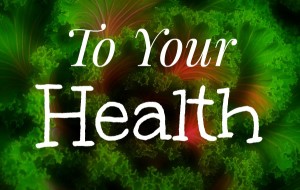
To read more of Denise’s articles, click here.
So spend some time outdoors and enjoy the refreshing autumn days while you can, and then when the time comes to close up the house for winter, you can do so knowing that you have the knowledge to keep your home clean while minimizing your body’s toxic chemical load.
Resources
Tox-Sick by Suzanne Somers
http://www.naturalnews.com/024429_chemicals_asthma_products.html
http://www.naturalnews.com/028018_indoor_air_pollution.html
http://www.bhg.com/gardening/houseplants/projects/poisonous-houseplants/
http://www.organicauthority.com/sanctuary/3-best-essential-oils-for-cleaning.html
http://www.rodalesorganiclife.com/home/natural-disinfectant
About Denise Mastrocola
Denise is a Michigander turned Pennsylvanian, who has been writing stories since Elementary School. Denise won an award at the annual Lansing Youth Talent Show, when she was in 10th grade, for a short story entitled Procrastination is Fatal, but didn’t decide on writing as a career until she was 28 years old. While homeschooling her older children she spent 4 years working through a course from The Institute of Children’s Literature.
Through the years Denise’s children have had a variety of health issues, many of which have been linked to various sensitives; having spent more than 20 years researching and trying different things Denise has a boots on the ground view on healthier living.
Denise currently writes for 2 blogs and has several books in different stages of completion. She is planning to break ground in e publishing, and hopes to have her first Historical Fantasy book which is set during the renaissance, “Lisa, My Lisa?” ready by the first of the year.
Twitter •

